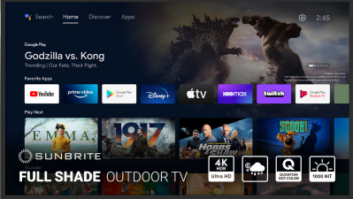It seems fitting to revisit the topic of bringing 3-D to the home that I wrote in November 2008.
As expected, 3-D was a significant buzz generator at the 2009 International CES. In addition to Mitsubishi, several other companies were showing 3-D demos on the show floor in addition to private suites.
Now that the CE industry seems focused on bringing this technology to market, what are some of the challenges and barriers to successfully launch the technology?
During CES, I had the pleasure of participating on a panel called, “How will we see 3-D TV?” The panel was represented by Insight Media, TI, Projection Design and Sensio. It was interesting to note that all panelists seem to believe that a 3-D standard for Home Video (Blu-ray Disc) was forthcoming and possible for 2009. Several companies showed 3-D content playing back from a Blu-ray player, but the devil is in the details.
During conversations with home-video studio executives, it seems clear that a “standard” is a gating factor to begin leveraging the 3-D cinema titles to the home. In addition, studio executives want the highest quality 3-D experience without sacrificing an installed base of existing HDTVs and Blu-ray players. Therein lies the rub. Gaining the best possible 3-D experience to the home is simply not possible by using non-3-D-ready HDTVs. In addition, while there are efforts to create a new standard for Blu-ray players to decode 3-D content, this past holiday season showed that consumers have started to increase the velocity of purchases for Blu-ray players due to the magical $199 price point being promoted.
In the end, the standard for prepackaged media needs to account for an existing base of Blu-ray players and also be capable of working on various types of displays (LaserVue, DLP, LCD and plasma). While a standard for prepackaged media seems to be “easier,” there are other organizations trying to define requirements for 3-D over broadcast media (cable, satellite, off-air). These standards will take time.
In the meantime, the industry has created significant buzz for 3-D and consumers are starting to ask how they can experience it at home. While no high-value 3-D content exists for the home today, there are systems that will enable consumers to experience an immersive gaming solution. Mitsubishi demonstrated at CES Unveiled our 3-D-ready home-theater TVs with an Aspen Media Server and Nvidia eyewear as one of several solutions for 3-D to the home today. The specifics of the system and purchase options are shown below.
The 833 Series and all 2009 Mitsubishi home-theater TVs are 3-D-ready and are available from select Mitsubishi retailers. These models can be viewed at http://mitsubishi-tv.com/theater.html.
The Aspen Media Products Home Theater PC is model GL-3158 and is available on their Web site: www.aspenmediaproducts.com with a suggested retail of $1,999 (as of August 2008).
Nvidia has announced new 3-D glasses that are available for order with their software-driver solution as of this posting. Please go to the Nvidia Web site at http://origin-www.nvidia.com/object/product_GeForce_3-D_VisionKit_us.html for the most current information.
From a merchandizing point of view, companies will have to make the investments to properly demonstrate 3-D at retail. While spreading the word and building the buzz is a first step, it is critical that consumers see firsthand the immersive experience of 3-D. Along these lines, Mitsubishi is launching 3-D demo kits at select retail locations. These demos will include the aforementioned systems with dedicated 2-D and 3-D content.












